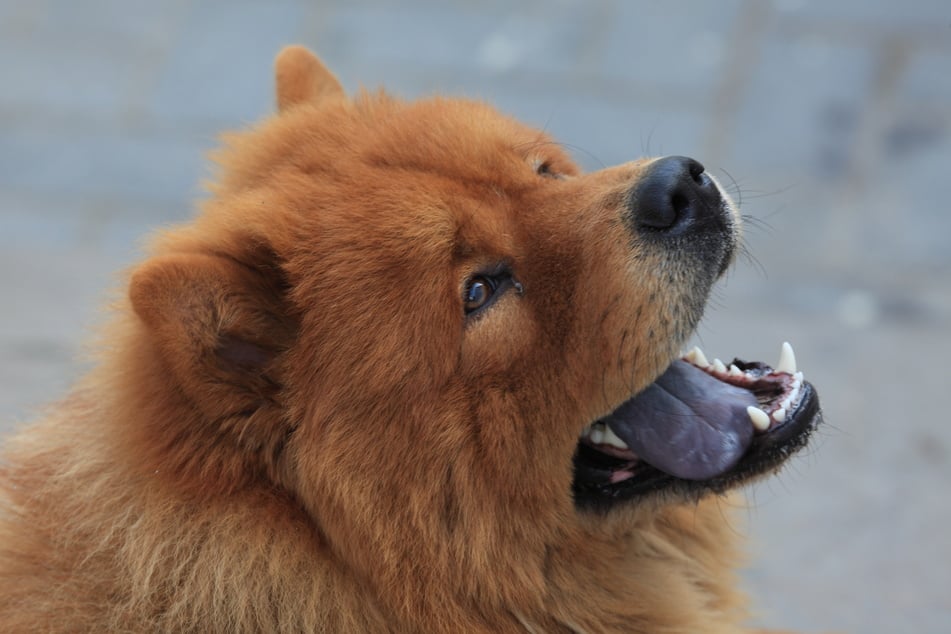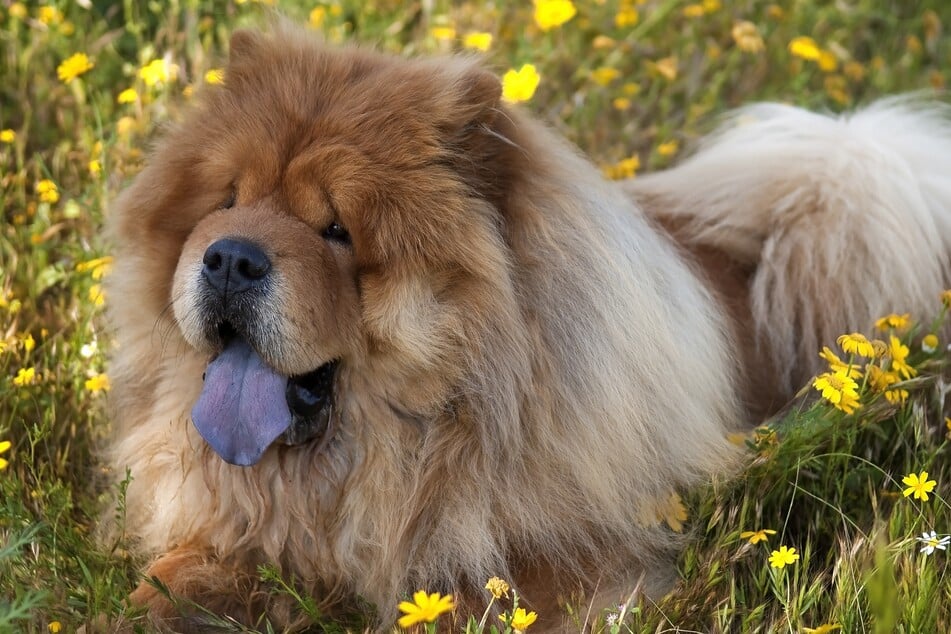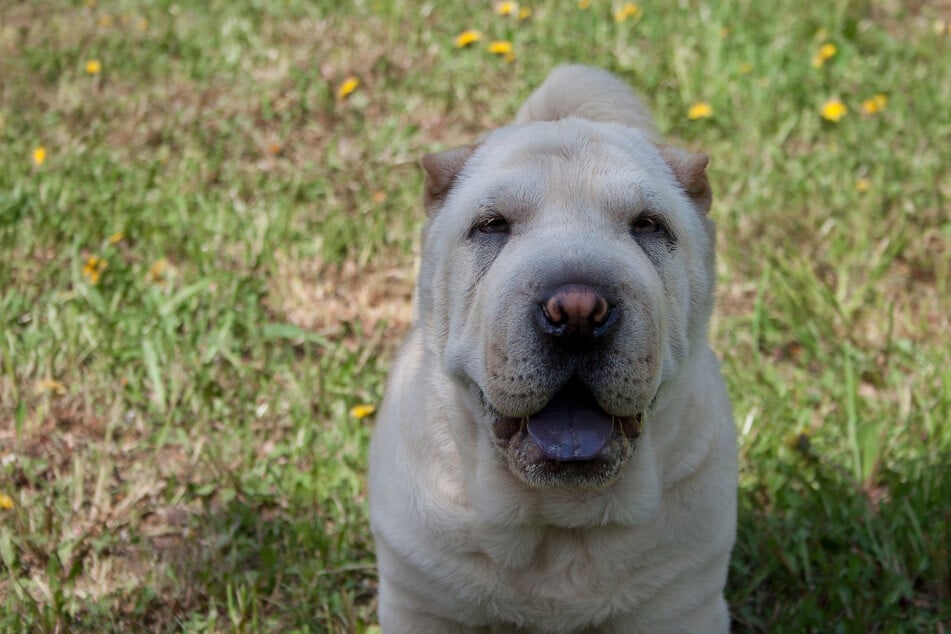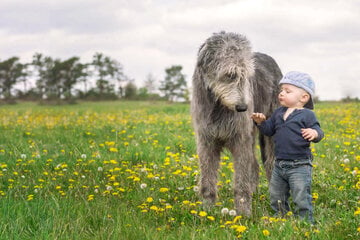Blue tongue dog: What dogs have blue tongues, and should you be worried?
Every dog has its own unique characteristics, and one of them can be a blue tongue - but it's not all sunshine and rainbows. What are the best blue tongued dog breeds, and when you should be worried?

Historically, dogs were selectively bred to intensify certain characteristics, depending on their purpose in the eyes of their beloved humans. This had a huge impact upon their temperament, appearance, and behaviors, both for good and for bad. Some have been so carefully bred, indeed, that their tongues are blue.
In this dog guide, TAG24 will take a look at three of the best dogs with blue tongues. Why do does your dog have a blue tongue and what dogs have blue tongues? Find out all that and more!
Top 3 Blue-tongued dogs
There are a few different dogs that have become known for their distinctive blue tongues, but few are more adorable or lovable than these three cuties. Famous for their florescent flappers, these beautiful doggos have interesting stories in their history, and the most curious of tongues.
Here are three of the most interesting, common, and famous dogs with blue tongues:
1. Is the Chow-Chow the dog with the bluest tongue?

Chow-Chows are well-known for their distinctive blue tongue. An old Chinese legend speaks of war dogs that looked like black-tongued lions – and you can easily see the resemblance, though modern specimens tend to be considerably more cuddly.
Chow-Chows are one of the oldest dog breeds in the world and are instantly recognizable even when their mouths aren't open due to their fluffy manes. They tend to be very stubborn and independent, which can make training them a real pain.
Speaking of pains, the story behind that unique tongue color is still a mystery. The best guess is something connected with blood flow, temperature regulation, or melanin production. Whatever the reason, it's definitely not a threatening condition, just a genetic trait that gets passed down.
Chow-Chows aren't really family dogs, so think long and hard before going in for what is usually a considerable expense. Their character and strong hunting instincts can be a challenge for even the most experienced dog owners.
2. The Shar-Pei is famous for its blue tongue

Another dog breed with a blue tongue originating in China is the Shar-Pei, which also has a pretty self-explanatory name when translated: "Chinese wrinkle dog." Shar-Peis also have blue gums and a bluish palate. Their short, firm coat varies greatly in color.
There's a good chance that the Shar-Pei's blue tongue is an indicator of some cross-breeding with the Chow-Chow at some point. Due to their physique, they're not recommended for owners who want a sporty canine companion. Shar-Peis are, however, well-suited for families, as they tend to be calm, fond of children, and just generally chill.
3. The Eurasier are dogs with blue tongues

The Eurasier is a crossbreed between the Chow Chow, the Keeshond, and the Samoyed - the aim of the breeders, it seems, was to create a very resilient dog. Eurasiers have blueish spots on otherwise punk tongues, a characteristic which comes from their genetic relationship with the Chow-Chows. Not every doggo has this pigmentation, though.
Despite their long coat, Eurasiers are pretty easy to care for. A friendly and balanced personality, coupled with an appreciation of human companionship, makes them suitable for families. The flip side of the coin is that Eurasiers don't tolerate alone time very well and need constant attention.
Breaking down the myths around dogs with blue tongues
Even until today there's still mystery surrounding these dog breeds and their unique blue tongues. It's easy to understand why Chow-Chows were the subject of mythical tales and legends in the time of China's ancient Han Dynasty, over 2200 years ago. Here are a couple.
Excuse me while I lick the sky
The Chow Chow is also called the Dragon Dog in Chinese mythology. A Chow Chow was said to have lived in the sky. It loved the day, but hated the night, and wished that it would never come, so it decided to just lap up all that darkness with its humongous tongue. This ingenious solution angered the gods, who punished it with a dark tongue for all eternity.
A piece of heaven
A similar, but slightly different story tells of how a piece of the sky fell to Earth while the world was being created and the stars were being fixed. The Chow-Chow licked up this piece of the sky, causing its tongue to turn blue.
When should you be worried about a blue-tongued dog?
So what could be going on if your non blue-tongued dog suddenly has a tongue the color of a rather flavorful berry? A blue tongue in dogs is often a sign of insufficient oxygen supply to the mucous membranes. In this case, it's not just the tongue that turns blue – you might see the same tinge on the palate, eyes, and even on your dog's genitals.
The underlying cause for an oxygen deficiency can be:
- Severe exhaustion
- A shock to the circulatory system
- Heart and lung diseases
If your dog suffers from oxygen deficiency, it will underfeed and seem listless, often refusing to move. In some cases, however, a pooch not getting enough oxygen can also become extremely restless. When these symptoms occur, your best bet will always be the veterinarian.
So, why does my dog have a blue tongue?
Ultimately, dogs have blue tongues either because they are a breed that has descended from the Chow Chow or because of a potentially serious medical problem. In the end, you will likely know whether your doggo is supposed to have a blue tongue and, if it isn't, then off to the vet you should go.
In general, whatever the symptoms, if you notice anything out of whack with your dog's behavior or appearance, the vet should always be your first step.
Cover photo: 123RF/hecke




